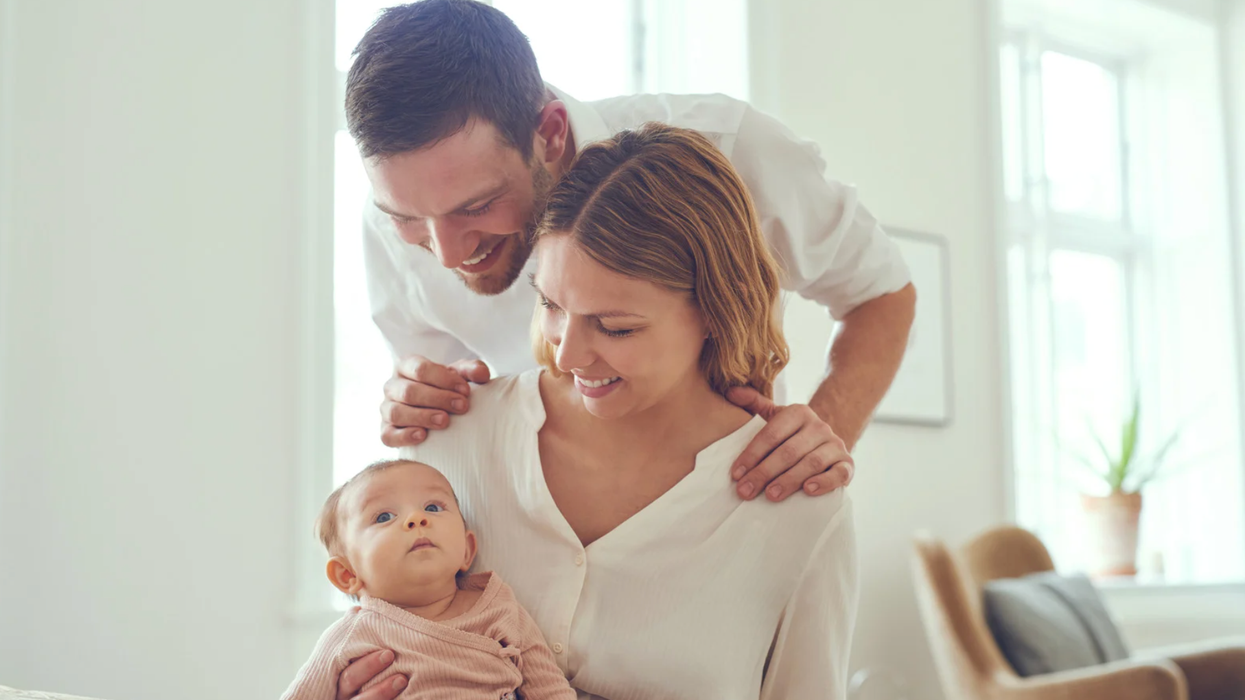While humans have explored the vast reaches of space, scientists continue to uncover baffling mysteries here on Earth, deep in the ocean. Recently, researchers discovered oxygen being produced in a dark part of the ocean without light, challenging our understanding of life’s origins. Now, they've found something equally perplexing: a mysterious trail of holes, spotted 1.6 miles deep in the Atlantic Ocean. These holes are so perfectly aligned that they appear man-made, leaving scientists puzzled.

Scientists are baffled by how a human could dive so deep into such a remote part of the ocean, especially since this area was only discovered in the summer of 2022. During an expedition of the National Oceanic and Atmospheric Administration's (NOAA) second Voyage to the Ridge 2022 expedition, the team spotted this pattern of holes on the seafloor of the volcanic mid-Atlantic Ridge. An underwater mountain system formed by plate tectonics, the ridge is one of the least explored areas of the ocean, reported Newsweek.
Photographs taken by the diving team reveal a series of holes arranged in a straight line, spaced at uniform intervals, each surrounded by piles of sediment. Scientists aren’t sure if the holes are connected beneath the sand and are so baffled by the discovery that they turned to social media for theories. “We saw several sublinear sets of holes in the seafloor,” NOAA wrote on X. “The origin of the holes has scientists stumped. The holes look human-made, but the little piles of sediment around them suggest they were excavated by...something. What's your hypothesis?”
“Deepwater upwelling? Pushing from the continental pressure,” wrote user @stealthwater on X. Another user named @notrob6’s guess was “Trail from pistol shrimp snapping into the ocean floor.” @sundaedivine said, “These lebensspuren are reminiscent of ichnofossils found in deep marine rocks.” On Facebook, a person named Phil Ashley said, “I think it is a minor crack in the surface which allowed gasses to escape.” One more user, JT Williams, added, “Molusk of some sort under the sand blows out a vent then slowly moves along blowing another vent when it rests.” Like @sundaedivine on X, user Andrea Baucon also said, “The holes are burrows, lebensspuren, produced by worm-like organisms,” which is something the scientists also feel.
According to a NOAA press release, a 2004 paper by scientists Michael Vecchione and Odd Aksel Bergstad provides the account of another expedition in which scientists stumbled upon similar trails of holes in the ridge. “While Vecchione and Bergstad were not able to definitively determine the source of the holes or how they were constructed, they hypothesize that the raised sediment may indicate excavation by an organism living in the sediment or digging and removal, perhaps via a feeding appendage of a large animal on the sediment surface,” they wrote.

The scientists referred to these organisms as “lebensspuren” or “life traces,” similar to the ichnofossils found in deep marine rocks, as some social media users suggested. Using suctioning devices, they also collected samples of sediments to see if something lived in there, per ScienceAlert. But the patterns of holes remain a mystery for now. "There is something important going on there and we don't know what it is," Vecchione told The New York Times, before adding, "This highlights the fact that there are still mysteries out there."


















 Representative Image: Accents reveal heritage and history.
Representative Image: Accents reveal heritage and history.  Representative Image: Even unseen you can learn a lot from an accent.
Representative Image: Even unseen you can learn a lot from an accent. 

 Rice grain and white rice.Image via
Rice grain and white rice.Image via  Person eats rice.Image via
Person eats rice.Image via  Washing and rinsing rice.
Washing and rinsing rice.  Mother and daughter eating rice meal.Image via
Mother and daughter eating rice meal.Image via 

 Bees feeding on food source.Image via
Bees feeding on food source.Image via 
 In the depths...Pexels | francesco ungaro
In the depths...Pexels | francesco ungaro Hope the lights stay on. Pexels | parfait fongang
Hope the lights stay on. Pexels | parfait fongang "That was beyond crazy..." YouTube |
"That was beyond crazy..." YouTube |  "This is the stuff of my nightmares..."YouTube |
"This is the stuff of my nightmares..."YouTube |  "Totally blown away..." YouTube |
"Totally blown away..." YouTube | 
 A representative Image of The Atlantic Ocean. Source: Pexels | Kellie Churchman
A representative Image of The Atlantic Ocean. Source: Pexels | Kellie Churchman Representative Image Source: Painting from a series by Ernest Untermann in the museum at Dinosaur National Monument, Utah.
Representative Image Source: Painting from a series by Ernest Untermann in the museum at Dinosaur National Monument, Utah. Representative Image Source: VARIOUS DINOSAURS IN GOBI DESERT. Photo by H. Armstrong Roberts/ClassicStock/Getty Images
Representative Image Source: VARIOUS DINOSAURS IN GOBI DESERT. Photo by H. Armstrong Roberts/ClassicStock/Getty Images
President Donald J. Trump and photo of a forest.
Public united and adamantly opposes Trump’s plan to roll back the Roadless Rule
There doesn't seem to be much agreement happening in the U.S. right now. Differing moral belief systems, economic disparity, and political divide have made a country with so many positives sometimes feel a little lost. Everyone desperately seeks a niche, a connection, or a strong sense of community to which they can feel a "part of," rather than just "apart."
But there seems to be one thing that the country strongly unites over, and that's the "Roadless Rule." With the Trump Administration attempting to roll back conservation policies that protect U.S. National Forests, Americans are saying in harmony an emphatic "No." A nonpartisan conservation and advocacy organization, the Center for Western Priorities, reviewed a comment analysis on the subject. After receiving 223,862 submissions, a staggering 99 percent are opposed to the president's plan of repeal.
What is the 'Roadless Rule' policy implemented in 2001?
The Roadless Rule has a direct impact on nearly 60 million acres of national forests and grasslands. According to the U.S. Department of Agriculture, the rule prohibits road construction and timber harvests. Enacted in 2001, it is a conservation rule that protects some of the least developed portions of our forests. It's considered to be one of the most important conservation wins in U.S. history.
America's national forests and grasslands are diverse ecosystems, timeless landscapes, and living treasures. They sustain the country with clean water and the wood products necessary to build our communities. The National Parks protected under their umbrella offer incredible recreational retreats and outdoor adventure.
Why does the administration want to roll it back?
U.S. Secretary of Agriculture Brooke L. Rollins told the Department of Agriculture in a 2025 press release, “We are one step closer to common sense management of our national forest lands. Today marks a critical step forward in President Trump’s commitment to restoring local decision-making to federal land managers to empower them to do what’s necessary to protect America’s forests and communities from devastating destruction from fires." Rollins continued, “This administration is dedicated to removing burdensome, outdated, one-size-fits-all regulations that not only put people and livelihoods at risk but also stifle economic growth in rural America. It is vital that we properly manage our federal lands to create healthy, resilient, and productive forests for generations to come. We look forward to hearing directly from the people and communities we serve as we work together to implement productive and commonsense policy for forest land management.”
Forest Service Chief Tom Schultz explained the Roadless Rule frustrated land management and acts as a challenging barrier to action. It prohibits road construction needed to navigate wildfire suppression and properly maintain the forest. Schultz said, “The forests we know today are not the same as the forests of 2001. They are dangerously overstocked and increasingly threatened by drought, mortality, insect-borne disease, and wildfire. It’s time to return land management decisions where they belong – with local Forest Service experts who best understand their forests and communities."
Why are people adamantly opposed to the proposed rollback?
A 2025 article in Earthjustice, a nonprofit environmental law organization, expressed its concern over the protection of national forests covering 36 states and Puerto Rico. A rescinded rule allows increased logging, extractive development, and oil and gas drilling in previously undisturbed backcountry. Here is what some community leaders had to say about it:
President Gloria Burns, Ketchikan Indian Community, said, "You cannot separate us from the land. We depend on Congress to update the outdated and predatory, antiquated laws that allow other countries and outside sources to extract our resource wealth. This is an attack on Tribes and our people who depend on the land to eat. The federal government must act and provide us the safeguards we need or leave our home roadless. We are not willing to risk the destruction of our homelands when no effort has been made to ensure our future is the one our ancestors envisioned for us. Without our lungs (the Tongass) we cannot breathe life into our future generations.”
Linda Behnken, executive director of the Alaska Longline Fishermen’s Association, stated, "Roadbuilding damaged salmon streams in the past — with 240 miles of salmon habitat still blocked by failed road culverts. The Roadless Rule protects our fishing economy and more than 10,000 jobs provided by commercial fishing in Southeast Alaska.”
The Sierra Club's Forest Campaign Manager Alex Craven seemed quite upset, saying, "The Forest Service followed sound science, economic common sense, and overwhelming public support when they adopted such an important and visionary policy more than 20 years ago. Donald Trump is making it crystal clear he is willing to pollute our clean air and drinking water, destroy prized habitat for species, and even increase the risk of devastating wildfires, if it means padding the bottom lines of timber and mining companies.”
The 2025 recession proposal would apply to nearly 45 million acres of the national forests. With so many people writing in opposition to the consensus, the public has determined they don't want it to happen.
Tongass National Forest is at the center of the Trump administration's intention to roll back the 2001 Roadless Rule. You can watch an Alaska Nature Documentary about the wild salmon of Tongass National Forrest here:
- YouTube www.youtube.com
The simple truth is we elect our public officials to make decisions. The hope is they do this for all of our well-being, although often it seems they do not. Even though we don't have much power to control what government officials do, voicing our opinions strongly enough often forces them to alter their present course of action. With a unanimous public voice saying, "No!" maybe this time they will course correct as the public wishes.